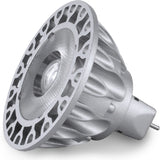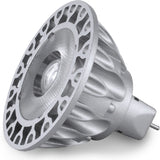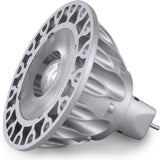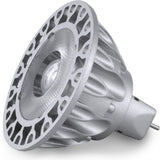Importance of Matching Beam Angles When Replacing Flood and Spot Lights
Posted by Dave on for ProLampSales

At some point it will become necessary to change out old light bulbs, and for many lighting situations this does not pose a problem. Where a problem does occur is when bulbs in directional lighting, such as track lights, require replacement.
While homes may have a few MR or PAR bulbs in various rooms, businesses like museums, art galleries, restaurants, and retail stores may have hundreds of bulbs with varying beam angles. Making sure these match the old bulbs is critical to maintain lighting consistency.
Matching the bulb style when purchasing replacements is simple enough, but it is important to ensure that the beam angle enjoyed with the previous bulbs is maintained, as not getting it correct will alter the quality of the lighting. A special item of wall art may need a focused narrow beam of light to highlight it, while a large collection of photographs on a wall will be best viewed under a wide flood of light.
While this may be obvious to many, it is very easy to purchase the wrong bulb and not take into account the spread of the beam. The part number printed on the bulb box will provide an indication of the beam spread. For example, a part number of 50PAR20/NFL will provide a narrow flood light, with the letters "NFL" indicating this beam spread.
Replacing directional LED bulbs is (of course) more complicated, as manufacturers may use their own designation for beam angles. Here are a few examples:
- Soraa: SP20-08-10D-827-H1 - the "10D" designates a 10-degree spot
- Sylvania: LED6.5PAR20DIM930TLFL40GLRP - the "FL40" designates a 40-degree flood
- Ushio: UPHORIA LED PAR20, NFL25, WW30 - the "NFL25" designates a 25-degree narrow flood
Most manufacturers should include a precise beam angle in the technical specifications for the bulb, but this may not be consistent with all manufacturers.
Here is a guide to the standard abbreviations for beam spread:
- FL (flood with between 30 and 40 degree beam angle)
- NFL (a narrow flood that is usually 25 degree beam)
- SP (spot with 10-15 degree beam)
- NSP (narrow spot with 8-9 degree beam)
- WFL (a wide flood that is wider than 40 degree beam)
When considering the purchase of replacement bulbs for directional lighting, it is important to consider how you need it to work for a specific application. Once this is recognized it is simply a matter of choosing the beam spread that will provide optimum results. This is also true when installing new lighting fixtures or replacing older fixtures with modern ones.
If uncertain about what bulbs to purchase or which types of lighting best suits a particular application, we provide a wide range of quality LED PAR bulbs, LED reflector floods, and halogen floods and spots.
However, it should be noted that almost all of the incandescent and halogen bulbs are now discontinued, as they no longer meet energy efficiency standards. While directional CFL bulbs were never popular, even if they were available, LED lamps can match many of the beam angles that halogen bulbs were traditionally used for.
Finally, you may also need to take into consideration some other factors. We've written an article in the past covering metrics like beam angle, beam spread, center beam candlepower, and lumens when comparing directional LED and halogen bulbs.
Featured Products (View All)
0 Comments




